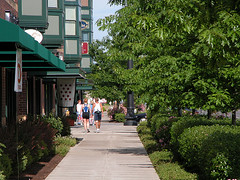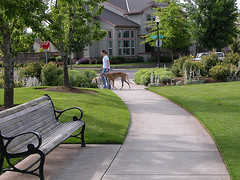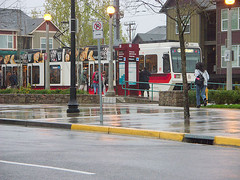Orenco Station found to have more walking, community interaction

Posted October 6, 2009 at 1:42PM
As many readers of this blog already know, Orenco Station was built as one of the country's first new, suburban transit-oriented developments. It's on Portland's MAX light rail line in Hillsborough, Oregon, and comprises some 1,850 housing units and a town center that includes 68,000 square feet of neighborhood-serving, ground-floor commercial space (with lofts above) on a total of 190 acres.
The now-iconic community was one of the first choices we made while researching NRDC's book of smart growth success stories, Solving Sprawl (Island Press, 2001). What I liked about the development from the start was that it was quiet and suburban, with lots of single-family houses and open space, giving suburban residents much of what they seek, but in a nonsprawling form incredibly convenient and oriented to transit. Relatively new at the time, it was receiving a lot of attention, including an NAHB community of the year award. 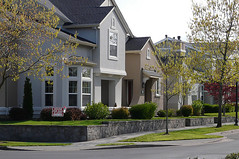 Although Orenco did not set out to follow new urbanist design principles, the results were certainly similar to those advocated by new urbanism, and the design movement has certainly claimed it as one of its own.
Although Orenco did not set out to follow new urbanist design principles, the results were certainly similar to those advocated by new urbanism, and the design movement has certainly claimed it as one of its own.
In fact, the community is featured in a front-page story in the September New Urban News written by publisher Robert Steuteville, because new research shows Orenco to be achieving some remarkable results in performance. The new work continues the research led by Bruce Podobnik at Lewis and Clark College, who first published a study on the development in 2002. Steuteville reports that the new study, which compared Orenco to three other neighborhoods in the region with differing design and location characteristics, "will be published in an upcoming urban research journal."
For now, the results are summarized in the New Urban News article and in another article in Builder, written by Teresa Burney. Of the other neighborhoods studied, Burney reports that two of the neighborhoods were urban (one poor and long-established; the other middle-class and also well-established, but hilly and lacking in sidewalks). The third was a suburban middle-class development of cul-de-sacs.
Steuteville's article includes tables of findings, one quite remarkable: Fifty percent of residents of Orenco Station report walking to a store or shop 5 or more times a week; that is ten times the rate of the cul-de-sac neighborhood. (The other two apparently were not surveyed on the point.) In addition, 67 percent of Orenco residents say they use mass transit at least once a week; the cul-de-sac neighborhood is also within a quarter-mile of a light rail station, but only 42 percent report using transit. One reason may be that "Orenco Station has pedestrian-friendly infrastructure, while the Beaverton suburb has few sidewalks."
While a strong majority of Orenco residents report using transit more frequently since moving there, they tend not to use it for commuting to work more often than do the residents of the other neighborhoods. In fact, they use it for commuting a little less than the others, 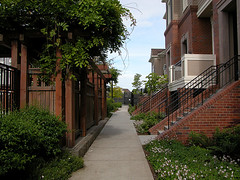 although their use of single-occupant vehicles for commuting is no higher (and lower than that for the Beaverton cul-de-sacs), because they walk, bike, carpool, or use "combination" modes of commuting more frequently than do the others.
although their use of single-occupant vehicles for commuting is no higher (and lower than that for the Beaverton cul-de-sacs), because they walk, bike, carpool, or use "combination" modes of commuting more frequently than do the others.
Michael Mehaffy, who was a project manager in the development of Orenco Station, speculates that the transit commuting number may be low because many of the community's residents work at an Intel facility "right on the community's doorstep" but not on the MAX line, likely resulting in short car trips (still good for reducing carbon emissions). One must also keep in mind that this is metro Portland we are talking about: Orenco's relatively "low," 15% mode share for transit commuting is still three times the national median.
Beyond transportation habits, the community's level of social activity has apparently risen substantially since 2002, when the development was still relatively new (and unfinished?). By wide margins, residents of Orenco Station outpace those of the comparison neighborhoods in reporting more friendliness, more "community," and more group participation than their previous communities. Steuteville believes the new study is the first of its kind to show big differences in social activity between new urbanist neighborhoods and more conventional development, and also the first to show such a high rate of walking to stores.
